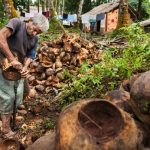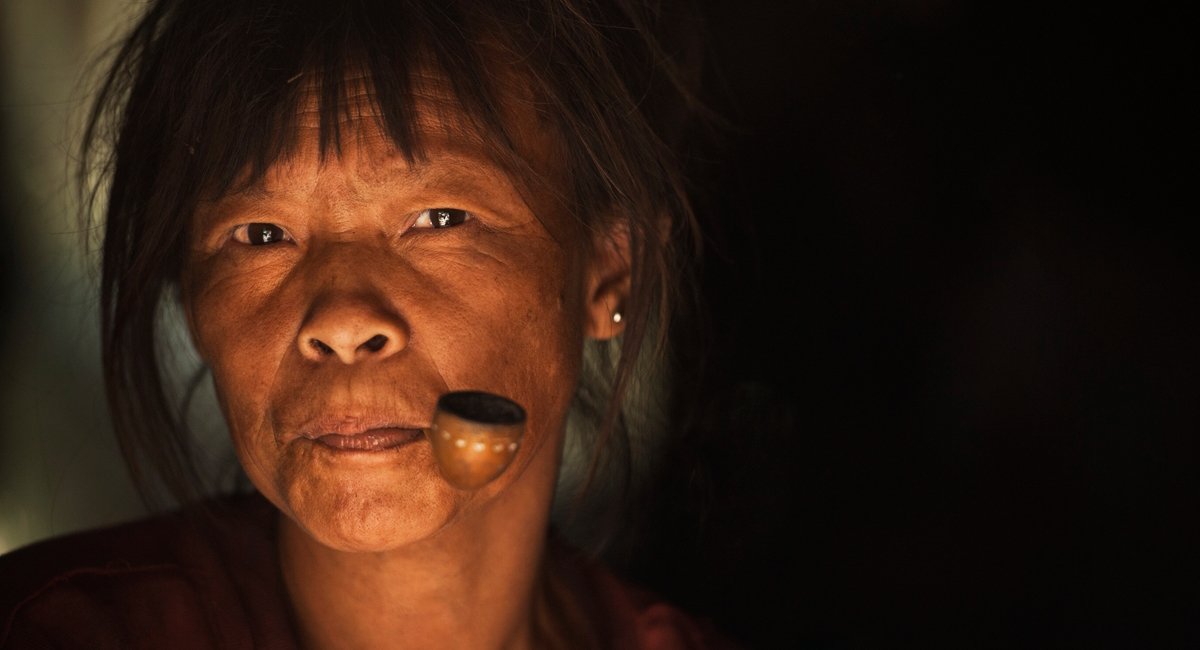
The Mangyan of Mindoro
Mindoro, Philippines
Last month I made a long awaited trip to the island of Mindoro to visit some of the different Mangyan groups there. This trip took a few months to arrange and I was very excited our journey happened as I have been wanting to visit Mindoro for a long time. Although, we knew it would not be easy to get access to the different communities we wanted to visit, our contacts and non-stop effort explaining and promoting the Katutubong Filipino Project helped us significantly on this trip. There are 8 different Mangyan groups (Iraya, Alangan, Tadyawan, Tau-buid, Bangon, Buhid, Hanunoo and Ratagnon) on the island of Mindoro and all are distinctively different including their languages. Mangyan is just the collective term used for the indigenous peoples found on Mindoro.
Something unique to the indigenous Mangyan of Mindoro is how well organized their groups are. All eight groups have active tribal councils and they are very strict about what visitors can enter their communities. Each group also has formal bylaws with penalties for different crimes that are committed. To enter the different communities we had to get clearance from the tribal leaders, the tribal councils and the National Commission on Indigenous Peoples with formal letters and documentation about our project. It was all a little daunting and we never knew if we would be approved or not until we arrived. In the end we made some wonderful friends with the different mayors (tribal leaders) and they all seemed very excited about the work we are doing. We are very thankful for being approved by all the communities we visited and we are already excited about our return trip.



Portraits of a Mangyan woman and a Mangyan man transporting coconuts.

Our trip started in Puerto Galera, a popular get-a-way and vacation destination for those living in Manila and foreign visitors alike. I always feel a little awkward when we end up in places like this with western restaurants and resorts while working on this project. I have come to realize though that our time in places like this are generally short and are usually for a particular reason. On this trip, we came to Puerto Galera to meet with a contact who had lived with the Iraya Mangyan in the mountains outside of Puerto. This would be our starting point to meet more people and help set the tone for our whole trip.
We hiked 5 kilometers up the mountain to meet some of the Iraya people we were told about. We met some wonderful people who were able to help make arrangements for our trip south to the Hanunoo and Bangon tribes. We only stayed one night with this Iraya community, but it was a great starting point. Many of the Iraya in this area have been well educated and have jobs as teachers, police officers and government employees. In the small community we visited typical every day activities were normal with an elementary school in town as well.

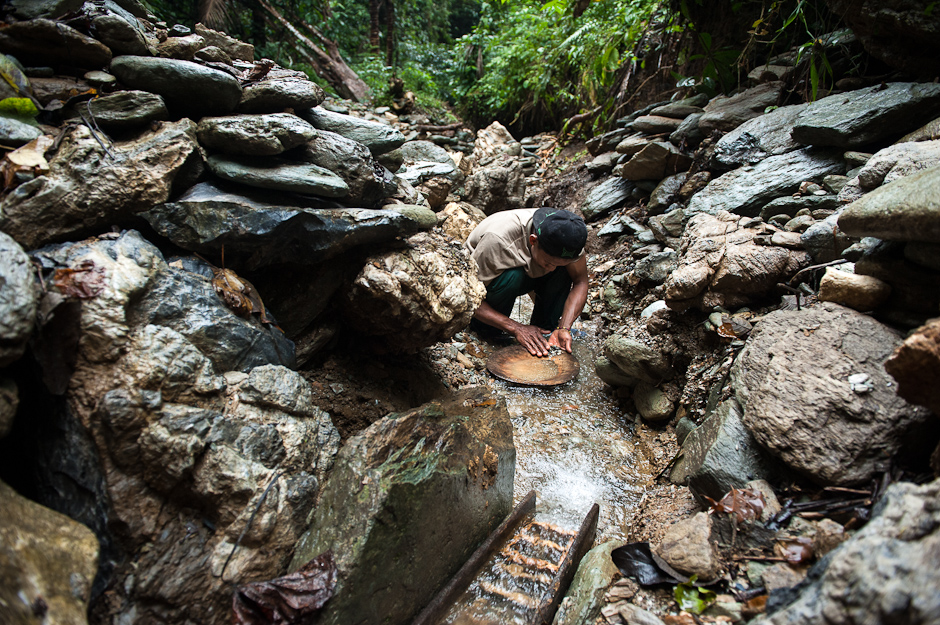

We headed south for a day and a half to try and get permission to enter a Hanunoo community from the tribal mayor and council. After a short deliberation they said it would be ok to go into their community and stay for as long as we would like to. I wanted to visit a Hanunoo village because of their indigenous script that is still sometimes used. I wanted to find out more about it. In the meantime, I spent my days in their community learning a little about their culture and what they do on a day to day basis. We found out that most families spend a lot of their time collecting crops in their fields.
Shifting agriculture (kaingin) is a common practice by all of the Mangyan groups because it is the only way they can grow crops to eat without using fertilizers. Most families own large tracks of land which they clear and plant different crops throughout the year. Everyday, crops are harvested for daily consumption with the majority of the Mangyan diets consisting of root crops such as sweet potatoes, ube, and kamoting kahoy. Eating rice is often a luxury because it is not grown where they live. After a few years the cleared land is not fertile anymore and another area is cleared and crops are planted. This is the nature of tropical soil and a method the Mangyan have been using for a long time. Most families own multiple tracks of land that they rotate using.


Shifting agriculture can be a touchy subject because of the environmental damage it can cause by clearing forests. After talking to a number of Mangyan they are aware of how the forests hold water into the ground (and keeps their rivers clean) and they restrict certain areas from being cleared. Forests near the river are not allowed to be cleared and any older growth forests are also not allowed to cleared. The Mangyan must have land to plant crops in order to survive. This is their main food source. However, many families are now growing larger tracks of produce that they harvest and sell to lowlanders as well. This larger scale farming on shifting agricultural lands is something that should be of concern for the forests and the Mangyan people. It is good to know though that many people there are aware of the effects of clearing all of the forest. On another related note; the Mangyan are very much against mining and any mining activities on their ancestral domain. They get a lot of offers from large and small mining companies, but they understand the long term effects of mining. Because they are well organized it is hard for companies to abuse or take advantage of their ancestral domain.
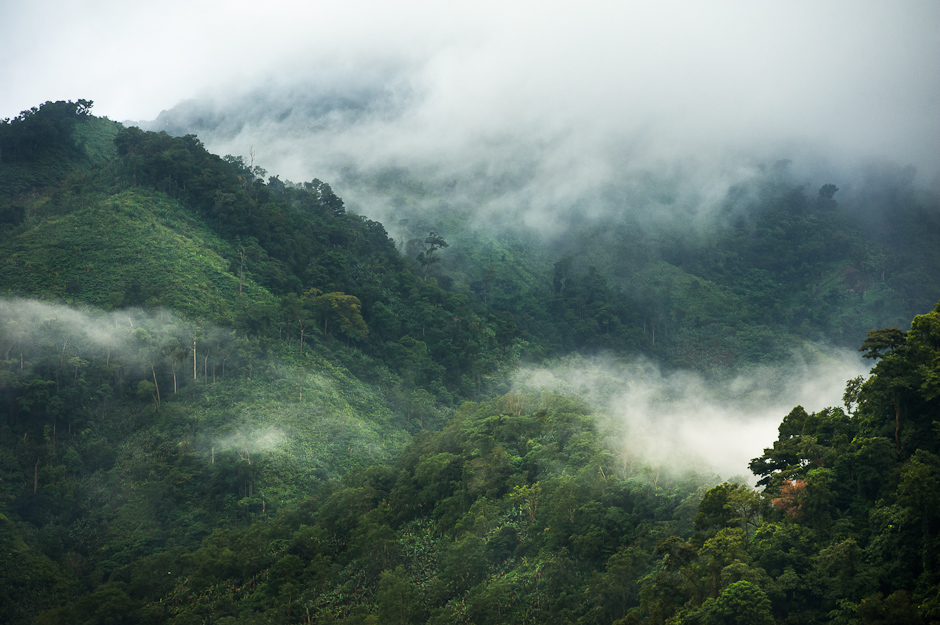

When night falls, communities become very quite. There is no electricity available so dinner is often prepared by lantern or fire light and usually starts right after it turns dark. Most people are asleep by 8 or 9pm and awake early in the morning when the sun rises. In the mountains it can get really cold at night as well. Towards the end of our trip I came down with a flu because of the very hot days and cold nights. It’s amazing to me to see children either naked or with only a small t-shirt on all night long when two blankets and a jacket barely keep me warm. Many of the children also had small colds.


Something I really wanted to see while with the Hanunoo was the Hanunoo script. The Hanunoo script is one of three indigenous scripts that is still being used today in the Philippines. The other two are the Buhid script (another Mangyan group) and the Tagbanua script in Palawan. Traditionally, the Hanunoo script was carved into fresh bamboo because paper was not readily available even 50 years ago. The script was occasionally used to communicate between communities, however, the main use of the script was to write love letters or love poetry called ambahan. Nais, one of the elders in the community we stayed with told us how they used to pass love letters to each other when they were younger. To send an ambahan or love letter to someone they would carve the script on bamboo and then place it on the corner of a path. When the other person passed by they would pick up the bamboo and read the message. She told us that everyone in the community knew what was going on, there were no secrets back then because these messages were left where everyone could read them. This was the way young men and women expressed their interest in each other and communicated.


Today, the younger generation is not learning the script although they still speak their native language. There were only three people in the community we stayed with who knew how to write the script, all well over 65 years old. The script has been well preserved, but those who know how to write it from memory may soon fade away. We were also told that there are likely thousands of ambahans that have been passed down from generation to generation. There are researchers who have spent countless time collecting these different ambahans to help preserve the poetry.
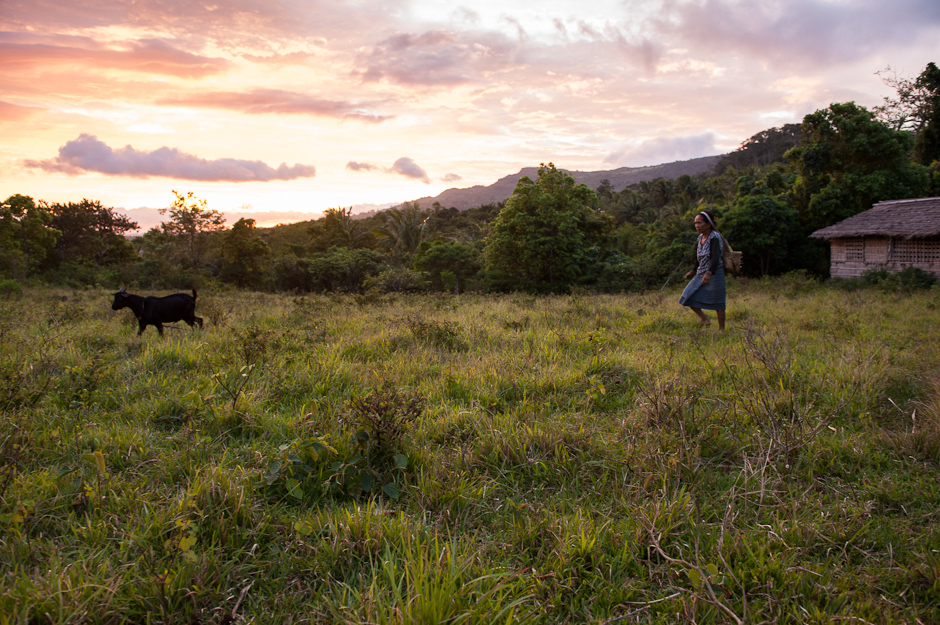
After leaving the Hanunoo community we spent a couple of days in the town of Roxas where St. Luke’s Medical Center and the Ramon Tulfo Good Samaritan Foundation was putting on a medical mission. The majority of the people who came to receive care were Mangyans who made the long trip down from the mountains. Because most of the leaders we needed to talk with were planning on coming to the medical mission we thought it would be a great place to meet. This was my first time to witness a medical mission and I was very impressed with how well it seemed to go. It was really well organized, with lots of help from volunteer nurses, surgeons, technicians and dentists who all came from Manila. The Mangyans and other community members seemed to all be very appreciative of the free medical care and the volunteers I talked with said they always look forward to doing this kind of work.



After the medical mission finished up, we headed to a Bangon community in the mountains along the Bongabon River. Getting there involved a rough motorcycle ride over rivers and very rocky terrain. There was one crossing where the motorcycle was half underwater in a fast flowing current and I had never been so nervous before seeing my camera gear tied to that bike. The drivers were very experienced though. After a couple of hours of rough motorcycle riding we had an hour hike to reach the community we would be staying at. After making arrangements with the mayor of the village the wonderful Mangyan hospitality started to shine. We were given a whole bamboo shelter to ourselves and the family who lived there transferred to another place so we could be accommodated. Cooked sweet potato’s and bananas were given to us and we felt like we had been there for a week already.
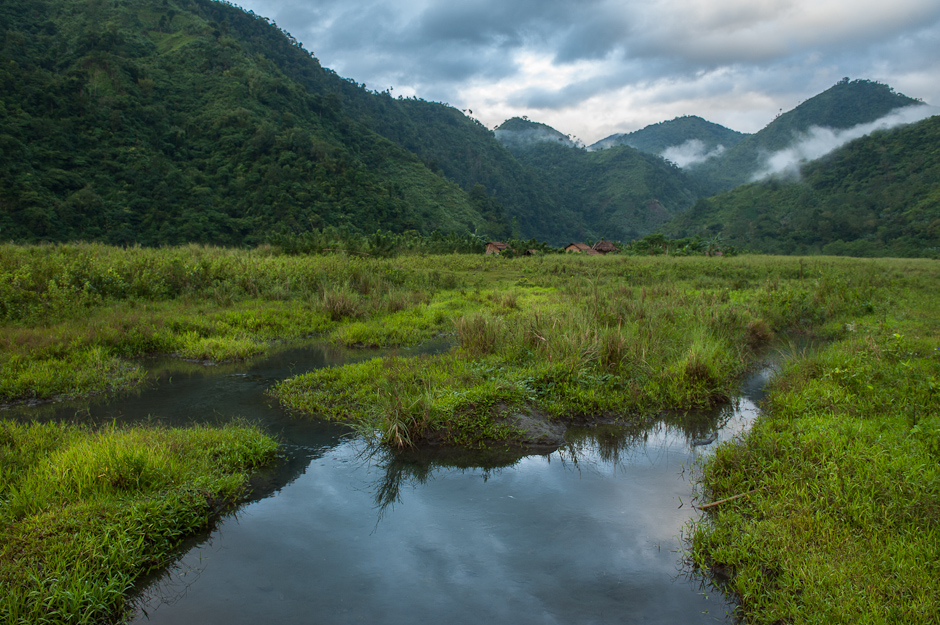

Life in the Bangon villages are not much different from the Hanunoo villages we went to. Much of the day is spent around planting and harvesting crops from the kaingin fields. This area had a lot of bananas, however, so a good majority of the Bangon diet consisted of cooked bananas together with their root crops. Some families would produce charcoal along side the river edge which they would sell to lowlanders. Life is very simple from our point of view.

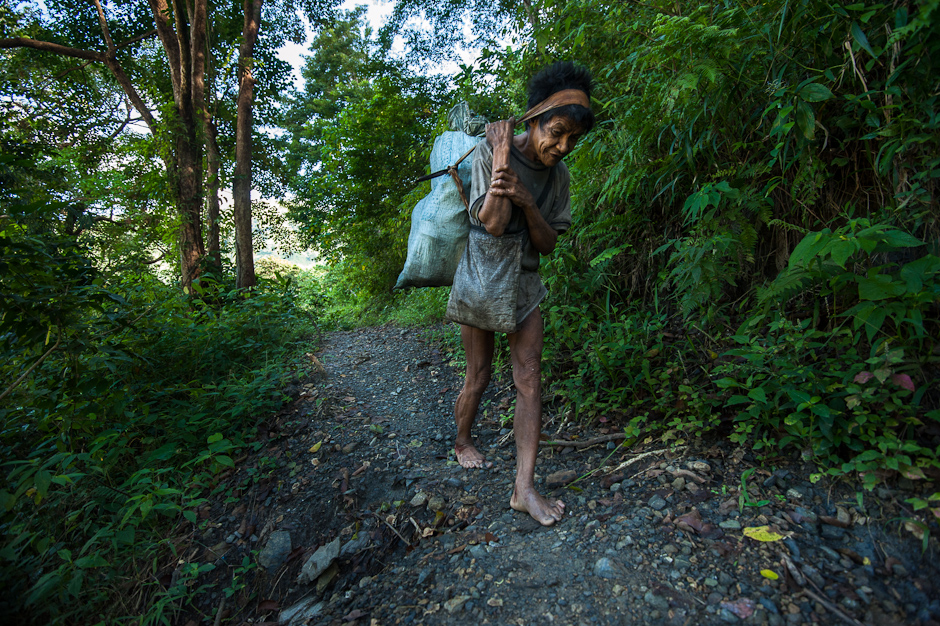
We were asked to attend a community meeting in a nearby village the day after we arrived. This nearby village was a lot larger than the one we were staying in and the mayor thought it would be a good opportunity to let people know why we were there. Additionally, they had this village meeting scheduled to discuss an upcoming ritual they were planning (more on that later). It was nice to discuss with the community about the purpose of our stay with them and I feel like we were able to explain well what the Katutubong Filipino Project was trying to accomplish. There were a lot of questions about the project and it can sometimes be hard to explain how communities will directly benefit from the pictures we take. Because our project is to help promote awareness to non-indigenous peoples there really isn’t anything we can say about how their particular community will directly benefit from our work. It was great that they understood what we were trying to accomplish though.


Every Friday and Saturday many of the Bangon harvest their excess produce and transport it to the lowlands to be sold. Because a lot of the crops come from far up in the mountains, floating everything down the river is the best way to transport it. Large tire tubes are used to float bananas and other produce down the strong river to be sold in the larger Tagalog towns. Everything from ginger, bananas, coconuts, sweet potatoes, and ube come into town to be sold. It’s grueling work and everyone helps transport the goods into town, including children.
The unfortunate situation of most Bangon is they don’t get a fair price for their goods. The lowlanders give them an extremely low price, but they always sell their goods anyway because they don’t want to bring them back up the river. Many of the Bangon also occur small amounts of debt during the week from the lowlanders when they buy rice or other products from their stores in town. Because they have this debt they are obligated to sell their products at a low price to the owners. It’s a sad situation to know how little they get for all the work they do in planting, harvesting and transporting their crops. We discussed with the mayor that they need to get better organized and set fixed rates for all of the crops they sell. If all of the Bangon sold their crops at the same rate the lowlanders would still buy them, but the Bangon would be better off.






In the Bangon culture if a married man wants to leave his wife for another woman he simply has pay his current wife a set amount of money. The man and woman will agree on a price, which isn’t generally too much, and then the man can leave. It seemed like a fairly common thing to do and I would say that most men in the community have had two or three wives in the past. There were a lot of step brothers and sisters in the village.
The last day of our stay we were invited to watch a special ritual performed by members of the community to help cast away a bad curse they had been in for a long time. This ritual is not performed very often and to be able to watch something like this was very special. Unfortunately, I was really sick at this point and all I wanted to do was lay down. The heat was getting to me and we had to make our way down the mountain in the afternoon to catch a boat back to Manila early the next morning. The ritual got started later than expected on this Saturday, so we were only able to watch the first part of it before we had to start to make our way back down. If I had been feeling better I may have tried to stay a few hours longer and travel back down in the dark. However, it was wonderful to witness this and partake in something that rarely happens. We were honored to be guests.


email: [email protected] |
© 2025 Jacob Maentz
